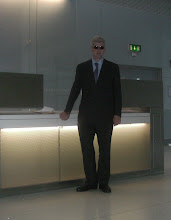In tests it shows the earth has anti matter particles. But a few problems exist with the beam core engine concept. The amount of antimatter required for this type of system is far beyond what is capable of being produced today. So at wise labs the suggestion is of more simple designs few of which have been studied as concepts. Collector methods such as in ram jets, multi neutron or photon valves experiments still show promising results. A magnetic nozzle that can handle high temperatures still needs to be developed as well as a cooling system in order to use the beam core concept in propulsion activities. A beam core spacecraft would also have to be very long because the annihilating particles in vortex travel near the speed of light.

There are many other systems that use anti protons to initiate fission of fusion processes. All of the energy in these systems used for propulsion comes from fusion reactions. There are two concepts that use this type of energy, which are being researched and developed at Pennsylvania State University. First, there is Antimatter-Catalyzed Micro-Fission/Fusion (ACMF). In this application a pellet of Deuterium-Tritium (D-T) and Uranium-238 (U-238) is compressed with particle beams and irradiated with a low-intensity beam of anti protons

Portable anti proton traps are being developed to capture anti protons and then transfer them to research facilities. Penn State University developed a Mark I portable anti proton Penning Trap in 1999 that was designed to hold 1010 anti protons NASA Marshall Spaceflight center is currently constructing an improved Mark II with a 100-fold greater capacity this is in comparison with the E.S.A secret projects of near secrets
 There are many other systems that use anti protons to initiate fission of fusion processes. All of the energy in these systems used for propulsion comes from fusion reactions. There are two concepts that use this type of energy, which are being researched and developed at Pennsylvania State University. First, there is Antimatter-Catalyzed Micro-Fission/Fusion (ACMF). In this application a pellet of Deuterium-Tritium (D-T) and Uranium-238 (U-238) is compressed with particle beams and irradiated with a low-intensity beam of anti protons
There are many other systems that use anti protons to initiate fission of fusion processes. All of the energy in these systems used for propulsion comes from fusion reactions. There are two concepts that use this type of energy, which are being researched and developed at Pennsylvania State University. First, there is Antimatter-Catalyzed Micro-Fission/Fusion (ACMF). In this application a pellet of Deuterium-Tritium (D-T) and Uranium-238 (U-238) is compressed with particle beams and irradiated with a low-intensity beam of anti protons Portable anti proton traps are being developed to capture anti protons and then transfer them to research facilities. Penn State University developed a Mark I portable anti proton Penning Trap in 1999 that was designed to hold 1010 anti protons NASA Marshall Spaceflight center is currently constructing an improved Mark II with a 100-fold greater capacity this is in comparison with the E.S.A secret projects of near secrets
Portable anti proton traps are being developed to capture anti protons and then transfer them to research facilities. Penn State University developed a Mark I portable anti proton Penning Trap in 1999 that was designed to hold 1010 anti protons NASA Marshall Spaceflight center is currently constructing an improved Mark II with a 100-fold greater capacity this is in comparison with the E.S.A secret projects of near secrets



No comments:
Post a Comment